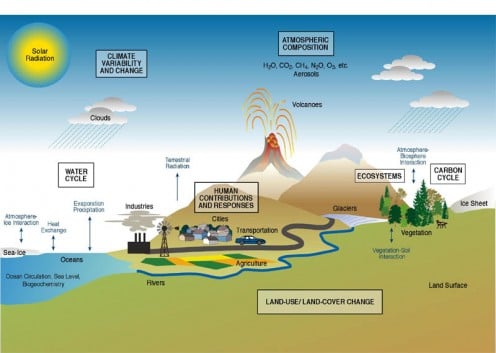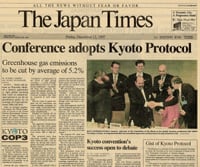GLOBAL WARMING: LAST CHANCE TO SAVE YOUR ONLY PLANET
Impact of Global Warming
Global Warming and Climate Change
Global Warming Impact on Animals
GLOBAL WARMING: LAST CHANCE TO SAVE YOUR ONLY PLANET
Yes, heard that right…you have just one last chance to save your only planet…before things reach the point of no return. No, this is not a doomsday prophecy nor the script of any science fiction….this is the stark reality we are going to face in this 21st century.
‘This is the defining challenge of our generation’ remarks the UN Secretary General, “The potential consequences for economic and social well-being are so profound that, for too long, many have preferred to simply avoid imagining the unimaginable. But there comes a time when denial is no longer an option. That time is now.’
What we are speaking of is climate change…. a fact we are slowly coming to terms with.
What is climate change? According to UN Frameworks conventions of climate change it “means a change of climate which is attributed directly or indirectly to human activity that alters the composition of the global atmosphere and which is in addition to natural climate variability observed over comparable time periods.”
What causes climate change?
Natural causes
Changes in climate occur due to two factors…either to natural or man made causes.. We have no control over natural causes, which may be due to the following.
1. Continental drift
Continental drift is the gradual drift of landmass over millions of years. As this changed the physical features of landmass this resulted in change of climate.
2. Volcanoes
A volcanic eruption results in massive belching out of sulpher di-oxide, dust and ash. This may last only a few days, but it is sufficient to bring out changes in climatic patters. The year 1816 for example was called “the year without a summer” in the US and Canada.. this was on account of the eruption of the Tambora volcano in Indonesia in the year 1815.
3. The earth's tilt
The earth orbits the sun tilted at an angle of 23.5° to the perpendicular plane of its orbital path. The axis is not constant; it varies, at the rate of a little more than a half-degree every century. Such changes in the tilt of the earth can affect the seasons – a greater tilt means warmer summers and colder winters; whereas a lesser tilt means cooler summers and milder winters. ).
4. Ocean currents
Ocean generates a lot of water vapor, which contributes to the greenhouse gas on Earth.
All the above natural causes contribute to climate change which was last believed to have happened, about 14,000 years ago at the end of the Ice Age
Man made causes
Climate change due to natural causes is a matter of concern about which we can do nothing. But what is more alarming is the changes brought about by humans.
Just look at the figures mentioned below. Around 1750 when the industrial revolution began the carbon content in the atmosphere was around 280 parts per million (ppm) in the atmosphere. Now it is around
390 ppm . All this was on account of Fossil fuels such as oil, coal and natural gas which build-up of greenhouse gases (GHGs). ¾ of the carbon dioxide emissions is contributed by the energy sector, which also belches out 1/5 of the methane emissions and a large quantity of nitrous oxide. Scientists estimate that the carbon content in he atmosphere is rising at the rate of 1.5–2 ppm annually and once it reaches the level of 450 ppm, things may go out of hand with very unpredictable consequences. Scientists believe that there is a 50 per cent chance of keeping to 2°C if the total GHG concentration remains below 450 ppm, provided WE ACT NOW and ACT FAST. We are literally facing an impending calamity and these figures are in no way encouraging.
Between 1990 and 2005, deforestation averaged about 13 million hectares a year, of which some 6 million hectares were primary forest. According to the Fourth Assessment Report of the Intergovernmental Panel on Climate Change the forestry sector,, accounts for about 17% of global greenhouse emissions, making it therefore the second largest source of carbon emission after the energy sector.
Carbon footprint is a measure of the amount of carbon dioxide produced by a person, organization or state in a given time. Our task is ensure that we minimize it to such an extent that average temperature should not rise by more than 2°C over pre-industrial levels which calls for a switchover to low-carbon lifestyle at our home, office and mode of travel.
KYOTO PROTOCOL – WHAT IS IT?
The Kyoto Protocol is an international agreement linked to the United Nations Framework Convention on Climate Change. it sets binding targets for 37 industrialized countries and the European community for reducing greenhouse gas (GHG) emissions .These amount to an average of five per cent against 1990 levels over the five-year period 2008-2012.
As developed countries owing to more than 150 years of industrial activity are principally responsible for the current high levels of GHG emissions in the atmosphere, the Protocol places a heavier burden on developed nations under the principle of “common but differentiated responsibilities.”
Countries that have ratified the Kyoto Protocol are committed to cut emissions of not only carbon dioxide, but of also other greenhouse gases like
Methane (CH4) Nitrous oxide (N2O) Hydro fluorocarbons (HFCs) Per fluorocarbons (PFCs) Sulphur hexafluoride (SF6)
If any participating country continues with emissions above the targets, then they are required to engage in emissions trading. This means buying "credits" from other participant countries who are able to comply with their reduction targets in order to offset the excess. This is also called ‘carbon trading’
Japan was the first country to adopt the Kyoto Protocol on 11 December 1997 and entered into force on 16 February 2005.
POZNAN CONFERENCE
The most recent climate control conference was The United Nations Climate Change Conference, held at Poznań, Poland, held from 1December to 12 December 2008 Over eleven thousand participants had attended this meeting, which both advanced international cooperation on a future climate change regime and brought progress on key issues. The next major UNFCCC gathering will take place next from 29 March to 8 April next year in Bonn, Germany.
WHAT YOU CAN DO
Adopt a low-carbon lifestyle at home, office and while traveling
- Use traditional wind-up alarm clock rather than an electronic one – by this we reduce 48 grams (g) of CO2 every day;
- Use a washing machine without a tumble dryer – by this we reduce 2.3 Kg of CO2;
- jog in a nearby park rather than use a treadmill by this we reduce nearly 1 Kg of the main greenhouse gas;
- Use non-electric toothbrush which will reduce 48g of CO2 emissions;
- Switch over from using the regular 60-Watt light bulbs to energy-saving ones will produce four times less greenhouse gas emissions;
- Travel by train rather than the car for commuting to office for distances as little as 8 km and this will result in a saving of a 1.7 Kg of CO2;
- Shutting down your computer and flat screen both during lunch break and after working hours will cut CO2 emissions generated by these appliances by almost one-third.
WHAT COUNTRIES CAN DO
New Zealand’s Christchurch Airport has recently become the first airport company in the southern hemisphere to attain carbon neutral certification for airport company operations, and has joined UNEP’s Climate Neutral Network (CN Net).
European Union has decided to phase out traditional household light bulbs in favor of new energy saving models.
WHAT COMPANIES CAN DO
Solar taxis the brainchild of a Swiss solar pioneer named Louis Palmer, is the world’s first and only Solar Taxi seeks which demonstrate that climate neutral technologies are perfectly suited to everyday use by completing a record-breaking, round-the-world tour in just 18 months.
Green Cabs, a car operator plants trees to offset CO2 emissions through its partner NGO Trees.
These are just a few but very concrete measures taken, but the fact is more needs to be done by all of us, because we have only ONE PLANET THAT WE CAN CALL OUR HOME.
LINKS
http://www.unep.org/themes/climatechange/Todo/index.asp
http://www.unep.org/wed/2008/english/Information_Material/factsheet.asp
http://www.climateactionprogramme.org/books/2008/
http://www.climateactionprogramme.org/books/2008/ca/p183-195.pdf
http://hdr.undp.org/oneplanet/?gclid=CJPm79ObwJcCFZUtpAodnxHPRw
http://www.terrapass.com/carbon-footprint-calculator/
Are we doing enough to arrest climate change












